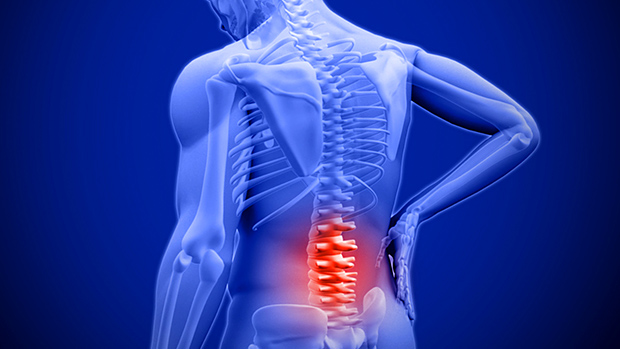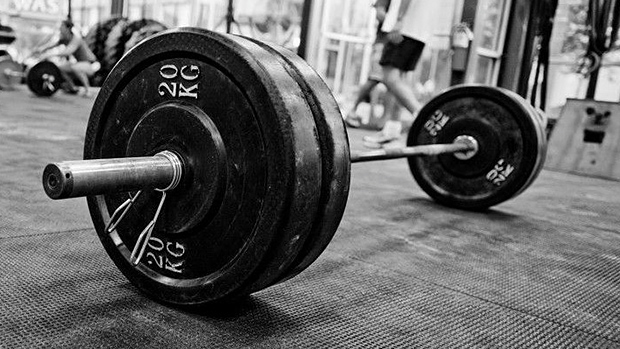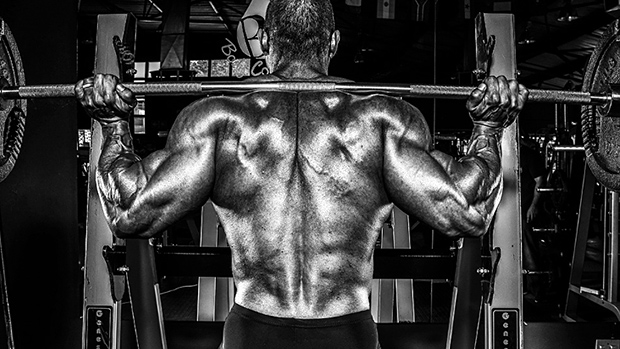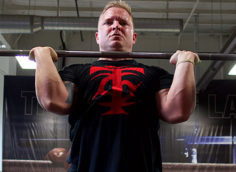Stubbornness goes hand in hand with competitiveness. This is why most of us will look for ways to keep squatting and deadlifting even when we're banged up.
I get it. My father, a champion distance runner, ran with Achilles tendinitis for 20 years.
How did it finally clear up? Ice and rest – he slipped on ice while running in the winter, broke his leg, and was forced to sit still for 6 weeks. So the cure for his tendinitis was a fractured tibia.
If you refuse to take time off, at least be as safe as possible. Rather than preach about rest and rehab – which you won't do anyway – I'll just propose some lesser evils.
We'll explore some ways to keep you lifting at a reduced stress level with some workarounds as a bonus.
We all get aches and pains – they'll never stop coming and going. All should be approached cautiously, but the reality is that many will clear up within a week or two.
Stubborn is continuing with lifts that cause pain as long as they don't get worse. We're all guilty of that from time to time.
Stupid is working through rapidly increasing pain. If it continues to worsen and you continue to ignore it – you're a dumb person.
The goal here is to give the stubborn person some ideas that may lessen his pain in hopes that a slight reduction in stress and increase in assistance work may heal the ailment. Stupid people, well, may just need to keep pushing until they win a Darwin award.
"Squatting hurts my knees, and sometimes my back. Deadlifting hurts my back, and sometimes my knees." You're not the minority. Both exercises have a heavy lower back component and involve lots of weight transmitted through the joints. Knees and backs don't love either exercise.
Your program is probably something like this:
High Volume of Squatting/Deadlifting + Lower Volume of Assistance for Supporting Tissues
Now that you're having problems, we need to turn the tables.
Lower Volume of Squatting/Deadlifting + Higher Volume of Assistance for Supporting Tissues
If you want to heal while being stubborn, you have to relinquish some control and do more to bring up the strength of your hamstrings, glutes, back, and core, which will take stress off of both lifts. However, let's first look at some ways you can keep squatting and deadlifting.
Knee pain is most commonly associated with deep knee bends. The fix for this is simple – exercises with a shallow knee bend. The first choice for me is always something that hits the same muscle group, if possible. In this case, it's the quads.
Some have pain while full squatting but won't with a powerlifting-style (vertical tibias) box squat. This is the case of one of my clients who needs a knee replacement in a few years but who doesn't want to stop squatting. The following variations will provide some relief.

1 Add Chains (a lot of them)
We typically only use only 10-20% chain weight for speed work. However, in this case, a 20-40% chain weight will allow you to hit your quads harder at the top of the movement, when there's less stress on the knees, while still giving you some bar weight at lower depths.
2 Add Bands
The same principle as the chains – these accommodate the strength curve and load the top portion of the squat significantly more than the bottom. With both chains and bands you'll feel the exercise heavily in the quads in the top half of the movement.
3 Go Above Parallel on the Box
The box should be used to keep depth in check. Put your ego on the shelf about hitting depth until your knees feel better. Typically 2-4 inches above parallel is enough to reduce pain drastically.
4 Get Wide with Vertical Shins
If you've never used the powerlifting box squat, now's the time to start. Sitting back to the box is easier on the knees, as is the approximately 90-degree knee angle. Be sure to squat powerfully straight up off the box and resist the urge to let the quads take you forward.
5 Go Lighter and Move Faster
The first thing I do to assess a problem is ask, "If you use less weight, does it still hurt?" Often the answer is no. So if taking off bar weight is a quick solution, we can still keep high motor-unit recruitment by exploding upward on every rep.
I've found that most problems associated with deadlifting are low-back related. Because the knees are pushed backward, the stress going through them is much different from in the squat in a way that causes fewer problems. Instead, the typical culprit is the forward torso lean when getting set over the bar.
Upon takeoff, we force the lower back to resist spinal flexion. Subsequently, the most stressful version is from the floor with a straight bar (lifting from a deficit, of course, would add even more stress). To reduce some of these stresses, we can attack with the following:
1 Romanian Deadlifts (RDLs)
This is a common but oft-underrated deadlift variation. Sports aren't played at a deep knee bend, so it's a misnomer to think we're getting less out of RDLs from a performance standpoint. There's plenty of carryover to sprinting and sports in general with the Romanian variety.

2 Add Chains and Bands
Same principles as with the squat. In the deadlift, the torso starts to erect soon after liftoff, with the shoulders migrating toward the center of mass. This will reduce lumbar stress as it relates to resisting flexion. This way we can more heavily load the top end of the movement as the torso becomes more upright.
If you don't have access to a squat rack or deadlift platform with band pegs, run a pair of short bands over the bar, step on them, and have at it.
3 Move Fast
Again, less weight with faster bar speed will maintain a higher level of muscle recruitment, preventing your max strength from decreasing while you take strain off your body. Many great deadlifters swear by speed deadlifts, saying they help take their PR to new heights.
4 Rack Pulls
We typically think of rack pulls as an assistance lift to improve grip and/or lockout. However, consider it a primary lift if you're having knee and/or back problems. You'll be able to get a high CNS response from using more weight and it should allow your deadlift to stay high while you get healthy.
5 Trap Bar Deadlift
The trap bar deadlift is the variation of choice for beginners, those with less hip mobility and/or weak backs. The more upright posture is much friendlier on the lower back while still building slabs of muscle on the upper back.
If we're going to provide some relief to the knees and back, there are few things we should do at a higher volume while we work with the aforementioned solutions.
Get the Weight Off the Back
This is number one. For squatting, taking the weight off the back is literal. For deadlifting, it's more indirect as the load is transmitted from the arms to the back. Either way, removing this from the equation will take strain off the aggravated tissues.
Great exercise choices from this category:
- Belt squats
- Prowler pushes and pulls
- Donkey kicks
Strengthen the Back in Other Ways
Rowing exercises, specifically low and horizontal variations, will help develop the mid-back to better support the spine, but we want to do these in a way that won't add stress.
Great exercise choices from this category:
- Chest supported row
- Inverted row
- One-arm cable row
Use Anteroposterior Hip Extension Exercises
We want to strengthen the glutes and hamstrings without stressing the back or knees. Exercises in which the hips move toward the center of mass, without spinal loading, are a great choice.
Great exercise choices from this category:
- Pull through
- Barbell hip thrust
- Broad jumps or one-legged broad jump
Go Hamstring-Specific
Most of these exercises are posterior-chain dominant, but ones that hit the hamstrings especially hard will pay high dividends. The hamstrings have a huge influence on the how the knee joint moves, so strengthening them is an easy way to reduce knee pain.
Great exercise choices from this category:
- Glute-ham raise
- Body curl
- Sliding leg curl
Embrace Unilateral Work
Unilateral exercises will reduce the load required and provide improved stability at the knee and in the core.
Great exercise choices from this category:
- One-leg RDL
- One-leg hip thrust
- Reverse lunge
Get Stronger in Your Core
A strong core is going to support the spine with increased tenacity. Training tons of youth athletes, I see back pain vanish as core strength increases, time and time again. If your deadlift gets big to the point where pain becomes frequent, you might be maxing out the limit of your core strength.
Great exercise choices from this category:
- Side bends
- Pallof press variations
- Rollout variations
Increase Lateral Hip Strength
The hips control the knees. Girls especially, with increased Q-angles in their hips, need stronger hip abductors to help stabilize the joint and keep the knee tracking properly.
If you've watched anyone rehab a knee injury, hip abductor/adductor work is a major staple. As an added benefit, if you struggle to keep your knees out while squatting, these will directly strengthen the muscles that do it. We call it pre-hab when you're preventing injury in the first place.
Great exercise choices from this category:
- Monster walk
- Side shuffle with 12-inch mini-band around ankles
- Squat with 12-inch mini-band around knees
I'm not espousing the idea that we should ignore pain and keep on crushing the iron. Pain is a vital protective mechanism that needs to be heeded.
As such, I'm going with the realistic advice somewhat akin to what you'd hear at your local health department. Abstinence is still the best protection, but since abstaining isn't fun (heavy lifting or otherwise), I'd rather you be as safe as possible while you invariably do what you do best – lift heavy things.





